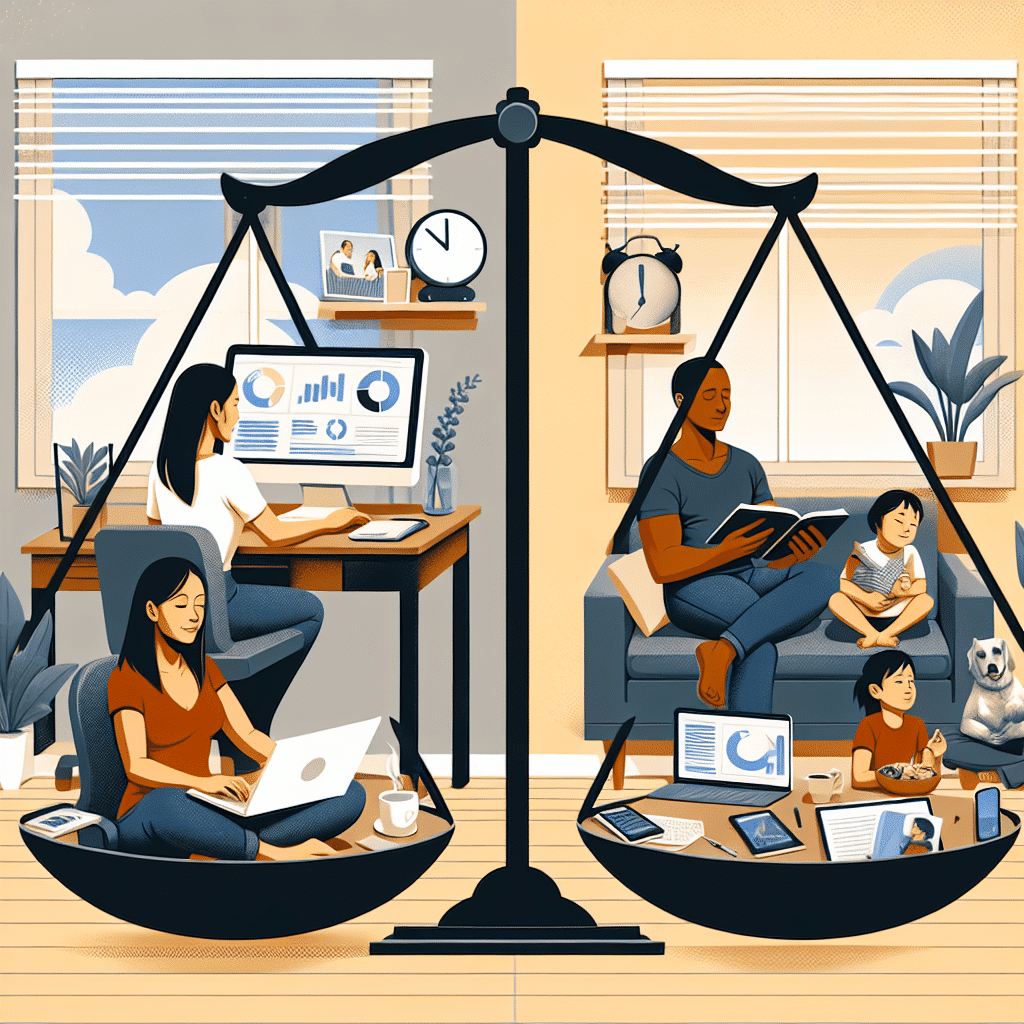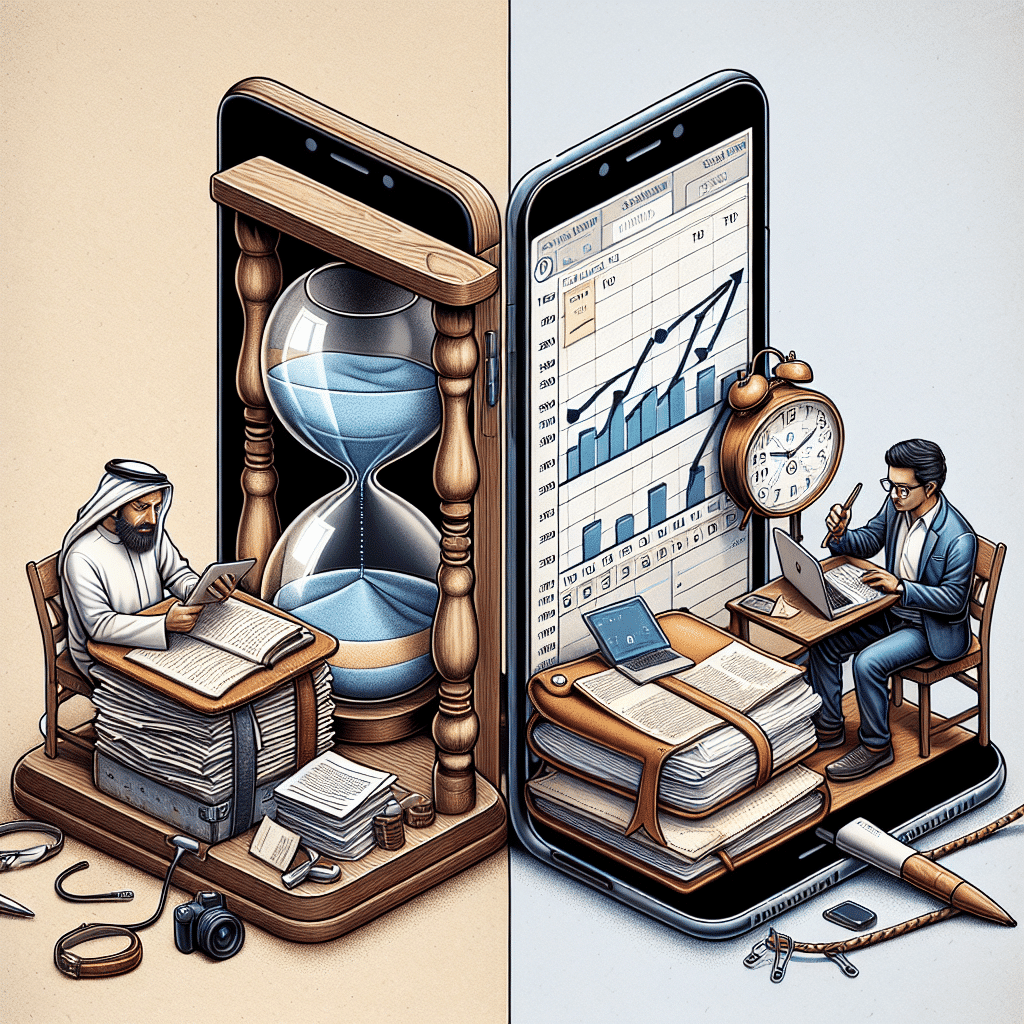Work-life balance has become increasingly important in the digital age as technology has made it easier for people to be constantly connected to work. Balancing work responsibilities with personal and family life is crucial for overall well-being and productivity. This article explores the importance of work-life balance, the challenges in achieving it, strategies for maintaining balance, the role of technology, and tips for managing work-life balance in the digital age.

The Challenges of Achieving Work-Life Balance in the Digital Age
In today’s digital age, maintaining a healthy work-life balance has become increasingly challenging. With constant access to technology and the expectations of being constantly connected, it can be difficult to establish boundaries between work and personal life. This constant connectivity has blurred the lines between work and leisure time, making it challenging to find the right balance.
One of the main challenges in achieving work-life balance in the digital age is the pressure to always be available. With smartphones, laptops, and other portable devices, employees are expected to be accessible outside of regular working hours. This constant connection can lead to a lack of separation between work and personal life, as individuals may feel the need to respond to emails or complete tasks even during evenings and weekends.
Another challenge is the additional workload that technology brings. While technology has undoubtedly made our lives more efficient in many ways, it has also led to an increase in the amount of work we are expected to do. Emails, instant messages, and virtual meetings can lead to a never-ending cycle of tasks and notifications, making it difficult to switch off and truly relax.
The digital age has also introduced the temptation to multitask. With multiple devices and applications vying for our attention, it can be tempting to try and do everything at once. However, multitasking can be detrimental to productivity and can lead to increased stress levels. Trying to juggle multiple tasks simultaneously often results in decreased focus and quality of work, as well as elevated stress levels.
Additionally, the boundaries between work and personal life have become increasingly blurred in the digital age. Remote work and flexible schedules have become more common, allowing individuals to work from anywhere at any time. While this flexibility can be beneficial, it can also make it difficult to separate work and personal life. Individuals may find themselves constantly checking work emails or projects even during personal time.
In conclusion, achieving a healthy work-life balance in the digital age poses several challenges. Constant connectivity, increased workloads, multitasking, and blurred boundaries between work and personal life can all make it difficult to find the right balance. However, by understanding these challenges and implementing effective strategies, individuals can successfully navigate the digital age while maintaining a healthy work-life balance.
Strategies for Maintaining Work-Life Balance
Work-life balance is a crucial aspect of living a healthy and fulfilling life, especially in the fast-paced digital age. It can be challenging to juggle the demands of work and personal life, but with the right strategies, achieving a satisfactory balance is possible. Here are some effective strategies for maintaining work-life balance:
1. Prioritize and Set Boundaries
One key strategy for maintaining work-life balance is to prioritize tasks and set clear boundaries between work and personal life. It is important to identify the most important tasks and prioritize them accordingly. This involves setting boundaries with work by establishing specific working hours and avoiding work-related tasks during personal time.
2. Delegate and Ask for Help
Learning to delegate tasks and ask for help is essential for managing work-life balance. It is important to recognize when the workload becomes overwhelming and seek assistance from coworkers or professionals. Delegating tasks allows individuals to focus on what truly matters and avoid burnout.
3. Time Management
Effective time management is crucial for maintaining work-life balance. It is essential to plan and organize tasks in a way that allows for dedicated time for work, personal activities, and relaxation. Using tools and techniques such as creating to-do lists, setting deadlines, and scheduling breaks can help individuals stay on track and make the most of their time.
4. Practice Self-Care
Self-care is an integral part of achieving work-life balance. Taking care of one’s physical, mental, and emotional well-being is essential for overall happiness and success. Engaging in activities that promote relaxation, such as exercising, meditating, or pursuing hobbies, can help individuals recharge and reduce stress.
5. Disconnect from Technology
In the digital age, it is important to establish boundaries with technology to maintain work-life balance. Constant connectivity can lead to blurred lines between work and personal life. Setting designated times to disconnect from technology, such as during meals or before bedtime, allows individuals to focus on personal relationships and rejuvenate.
6. Communicate and Negotiate Expectations
Open communication is crucial for maintaining work-life balance. It is important to communicate with supervisors, colleagues, and family members about personal needs and expectations. Negotiating flexible work arrangements, such as remote work options or flexible working hours, can greatly contribute to achieving a better work-life balance.
7. Establish a Support System
Having a support system in place is essential for managing work-life balance. This can include friends, family members, or even professional coaches or mentors who can provide guidance and support. Surrounding oneself with positive influences and seeking advice when needed can help individuals navigate the challenges of work-life balance.
By implementing these strategies, individuals can effectively maintain work-life balance in the digital age. Prioritizing tasks, setting boundaries, practicing self-care, and establishing a support system can all contribute to a healthier and more fulfilling life.

The Role of Technology in Work-Life Balance
Technology has undoubtedly revolutionized the way we work and communicate, providing numerous benefits and opportunities. However, it has also blurred the line between work and personal life, making it more challenging to maintain a healthy work-life balance. Let’s explore the role of technology in this delicate balance and how it can both hinder and help us in achieving it.
The Negative Impact of Technology
While technology has made us more connected and accessible, it has also increased the demands on our time and attention. The constant influx of emails, messages, and notifications can create a sense of urgency and make it difficult to switch off from work. This can lead to longer working hours, decreased productivity, and increased stress levels.
Moreover, technology has made it possible to work from anywhere at any time, blurring the boundaries between work and personal life. Employees are often expected to be available and responsive outside of regular working hours, making it challenging to disconnect and engage in non-work activities.
The Positive Influence of Technology
While technology may contribute to the challenges in achieving work-life balance, it can also be a valuable tool to help us manage our time more effectively. With the right strategies and mindset, technology can support a healthy work-life balance:
1. Flexibility: Technology enables employees to work remotely, giving them the freedom to create their own schedules and better integrate work and personal life. This flexibility allows individuals to attend to personal obligations without sacrificing their professional responsibilities.
2. Productivity Tools: There are numerous productivity tools and apps available that can assist in managing tasks, prioritizing work, and improving efficiency. By utilizing these tools, individuals can streamline their work processes, accomplish tasks more quickly, and free up time for non-work activities.
3. Communication: Technology facilitates communication and collaboration, allowing team members to connect and work together regardless of their physical locations. This can promote work-life balance by reducing the need for extensive travel or in-person meetings, giving individuals more time for personal activities.
Striking a Balance
While technology can be both a hindrance and a help in achieving work-life balance, the key lies in setting boundaries and establishing healthy habits:
1. Set Limits: Establish clear boundaries between work and personal life by setting designated work hours and sticking to them. Create a schedule that allows for regular breaks, exercise, and relaxation.
2. Disconnect: Allocate time each day to disconnect from technology completely. This means turning off work-related notifications and avoiding the urge to constantly check emails or messages.
3. Prioritize Self-Care: Make self-care a priority by engaging in activities that promote well-being, such as exercise, meditation, or hobbies. Allow yourself time to recharge and rejuvenate.
4. Communicate and Collaborate: Openly communicate with colleagues and supervisors about your boundaries and availability. Use technology to your advantage by setting clear expectations and utilizing collaboration tools effectively.
In conclusion, technology plays a significant role in work-life balance in the digital age. While it can present challenges, it also offers numerous opportunities to effectively manage our time and responsibilities. By leveraging technology wisely, setting boundaries, and prioritizing self-care, individuals can strike a balance between work and personal life in today’s digital era.
Tips for Managing Work-Life Balance in the Digital Age
As technology continues to advance and infiltrate every aspect of our lives, achieving work-life balance in the digital age can be a challenging task. However, with the right strategies and mindset, it is possible to create harmony between your professional and personal life.
1. Establish clear boundaries
One of the key aspects of maintaining work-life balance is to establish clear boundaries between work and personal life. Set specific working hours and stick to them. Avoid responding to work-related emails or messages outside of those hours, as this can blur the line between work and personal time.
2. Plan and prioritize
Create a well-defined schedule that includes both work and personal activities. This will help you prioritize tasks and allocate time accordingly. Be realistic about what you can accomplish in a day and avoid overcommitting yourself.
3. Take regular breaks
It is important to take regular breaks throughout the day to recharge and avoid burnout. Step away from your desk, stretch your legs, or engage in activities that help you relax and refocus. This can improve productivity and overall well-being.
4. Utilize technology wisely
While technology can be a major contributor to work-life imbalance, it can also be a valuable tool in managing it. Utilize productivity apps or tools that can help streamline tasks, manage time efficiently, and minimize distractions. Embrace technology that promotes work-life integration rather than work-life imbalance.
5. Practice self-care
Make self-care a priority in your life. This includes getting sufficient sleep, eating nutritious meals, and engaging in regular exercise. Prioritizing your well-being will not only improve your work performance but also enhance your personal life.
6. Delegate and ask for help
Recognize that you cannot do everything on your own. Learn to delegate tasks and trust others to handle them. Additionally, don’t hesitate to ask for help when needed, whether it’s from coworkers, friends, or family. Sharing responsibilities can help alleviate stress and allow for more balance.
7. Disconnect regularly
In the digital age, it can be difficult to disconnect from work completely. However, it is essential to take breaks from technology to recharge and focus on personal relationships and activities. Designate specific times or days where you disconnect from work-related devices and spend quality time with loved ones.
By implementing these tips and making conscious efforts to maintain a healthy work-life balance, you can navigate the challenges of the digital age and create a fulfilling and enriching life both personally and professionally.

Summary
Work-life balance is crucial in the digital age, where technology blurs the boundaries between work and personal life. Achieving and maintaining work-life balance can be challenging due to the constant connectivity and the pressure to always be available. However, there are strategies that individuals can adopt to ensure a healthy work-life balance, such as setting boundaries, prioritizing self-care, and engaging in activities outside of work. Technology also plays a critical role and can be used to automate tasks, set reminders, and create a separation between work and personal life. Overall, managing work-life balance in the digital age requires intention and a proactive approach.






